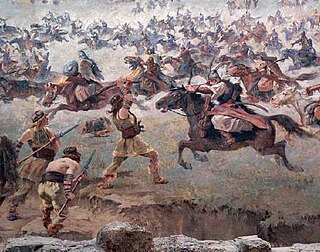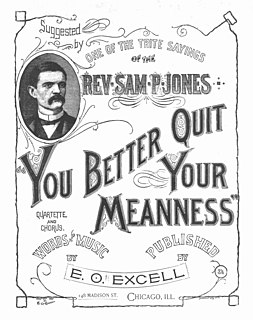 W
WA bench-clearing brawl is a form of ritualistic fighting that occurs in sports, most notably baseball and ice hockey, in which every player on both teams leaves their dugouts, bullpens, or benches, and charges the playing area in order to fight one another or try to break up a fight. Penalties for leaving the bench can range from nothing to severe.
 W
WBullying is the use of force, coercion, or threat, to abuse, aggressively dominate or intimidate. The behavior is often repeated and habitual. One essential prerequisite is the perception of an imbalance of physical or social power. This imbalance distinguishes bullying from conflict. Bullying is a subcategory of aggressive behavior characterized by the following three minimum criteria: (1) hostile intent, (2) imbalance of power, and (3) repetition over a period of time. Bullying is the activity of repeated, aggressive behavior intended to hurt another individual, physically, mentally, or emotionally.
 W
WCruelty is pleasure in inflicting suffering or inaction towards another's suffering when a clear remedy is readily available. Sadism can also be related to this form of action or concept. Cruel ways of inflicting suffering may involve violence, but affirmative violence is not necessary for an act to be cruel. For example, if a person is drowning and begging for help and another person is able to help with no cost or risk, but is merely watching with disinterest or perhaps mischievous amusement, that person is being cruel—rather than violent.
 W
WCute aggression, or playful aggression, is superficially aggressive behaviour caused by seeing something cute, such as a human baby or young animal. People experiencing cute aggression may grit their teeth, clench their fists, or feel the urge to bite, pinch and squeeze something they consider cute, while not actually causing or intending to cause any harm.
 W
WDiscrimination is the act of making unjustified distinctions between human beings based on the groups, classes, or other categories to which they are perceived to belong. People may be discriminated on the basis of race, gender, age or sexual orientation, as well as other categories. Discrimination especially occurs when individuals or groups are unfairly treated in a way which is worse than other people are treated, on the basis of their actual or perceived membership in certain groups or social categories. It involves restricting members of one group from opportunities or privileges that are available to members of another group.
 W
WThe fight-or-flight response is a physiological reaction that occurs in response to a perceived harmful event, attack, or threat to survival. It was first described by Walter Bradford Cannon. His theory states that animals react to threats with a general discharge of the sympathetic nervous system, preparing the animal for fighting or fleeing. More specifically, the adrenal medulla produces a hormonal cascade that results in the secretion of catecholamines, especially norepinephrine and epinephrine. The hormones estrogen, testosterone, and cortisol, as well as the neurotransmitters dopamine and serotonin, also affect how organisms react to stress. The hormone osteocalcin might also play a part.
 W
WFighting in ice hockey is an established tradition of the sport in North America, with a long history that involves many levels of amateur and professional play and includes some notable individual fights. Fighting may be performed by enforcers, or "goons" —players whose role is to fight and intimidate—on a given team, and is governed by a system of unwritten rules that players, coaches, officials, and the media refer to as "the code". Some fights are spontaneous, while others are premeditated by the participants. While officials tolerate fighting during hockey games, they impose a variety of penalties on players who engage in fights.
 W
WThe male warrior hypothesis (MWH) is an evolutionary psychology hypothesis by Professor Mark van Vugt which argues that human psychology has been shaped by between-group competition and conflict. Specifically, the evolutionary history of coalitional aggression between groups of men may have resulted in sex-specific differences in the way outgroups are perceived, creating ingroup vs. outgroup tendencies that are still observable today.
 W
WMeanness is a personal quality whose classical form, discussed by many from Aristotle to Thomas Aquinas, characterizes it as a vice of "lowness", but whose modern form deals more with cruelty.
 W
WMonoamine oxidase A, also known as MAO-A, is an enzyme that in humans is encoded by the MAOA gene. This gene is one of two neighboring gene family members that encode mitochondrial enzymes which catalyze the oxidative deamination of amines, such as dopamine, norepinephrine, and serotonin. A mutation of this gene results in Brunner syndrome. This gene has also been associated with a variety of other psychiatric disorders, including antisocial behavior. Alternatively spliced transcript variants encoding multiple isoforms have been observed.
 W
WOn Aggression is a 1963 book by the ethologist Konrad Lorenz; it was translated into English in 1966. As he writes in the prologue, "the subject of this book is aggression, that is to say the fighting instinct in beast and man which is directed against members of the same species."
 W
WPsychological warfare (PSYWAR), or the basic aspects of modern psychological operations (PSYOP), have been known by many other names or terms, including MISO, Psy Ops, political warfare, "Hearts and Minds", and propaganda. The term is used "to denote any action which is practiced mainly by psychological methods with the aim of evoking a planned psychological reaction in other people".
 W
WScapegoating is the practice of singling out a person or group for unmerited blame and consequent negative treatment. Scapegoating may be conducted by individuals against individuals, individuals against groups, groups against individuals, and groups against groups.
A snarl is a sound, often a growl or vicious utterance, often accompanied by a facial expression, where the upper lip is raised, and the nostrils widen, generally indicating hate, anger or pain. In addition to humans, other mammals including monkeys, rabbits and dogs snarl, often to warn others of their potential bite. In humans, snarling uses the levator labii superioris alaeque nasi muscle. The threatening vocalizations of snarling are often accompanied by or used synonymously with threatening facial expressions.
 W
WA tantrum, temper tantrum, fit or hissy fit is an emotional outburst, usually associated with those in emotional distress, that is typically characterized by stubbornness, crying, screaming, violence, defiance, angry ranting, a resistance to attempts at pacification, and, in some cases, hitting, and other physically violent behavior. Physical control may be lost; the person may be unable to remain still; and even if the "goal" of the person is met, they may not be calmed. Throwing a temper tantrum can lead to a child being placed in timeout, being grounded or even being suspended from school for older school age children. A tantrum may be expressed in a tirade: a protracted, angry speech.
 W
WVerbal aggressiveness in communication has been studied to examine the underlying message of how the aggressive communicator gains control over different things that occur, through the usage of verbal aggressiveness. Scholars have identified that individuals who express verbal aggressiveness have the goal of controlling and manipulating others through language. Infante and Wigley defined verbal aggressiveness as "a personality trait that predisposes persons to attack the self-concepts of other people instead of, or in addition to, their positions on topics of communication". Self-concept can be described as a group of values and beliefs that one has. Verbal aggressiveness is thought to be mainly a destructive form of communication, but it can produce positive outcomes. Infante and Wigley described aggressive behavior in interpersonal communication as products of individual's aggressive traits and the way the person perceives the aggressive circumstances that prevents them or something in a situation.
 W
WDolf Zillmann is Dean Emeritus, and Professor of Information Sciences, Communication and Psychology at the University of Alabama (UA). Zillmann predominately conducted research in Media Psychology, a branch of Psychology focused on the effects of media consumption on human affect, developing and expanding a range of theories within Media Psychology and Communication. His work centred on the relation between aggression, emotion, and arousal through media consumption, predominately in pornography and violent genres of movie and television. His research also includes the effects of music consumption, video games, and sports.